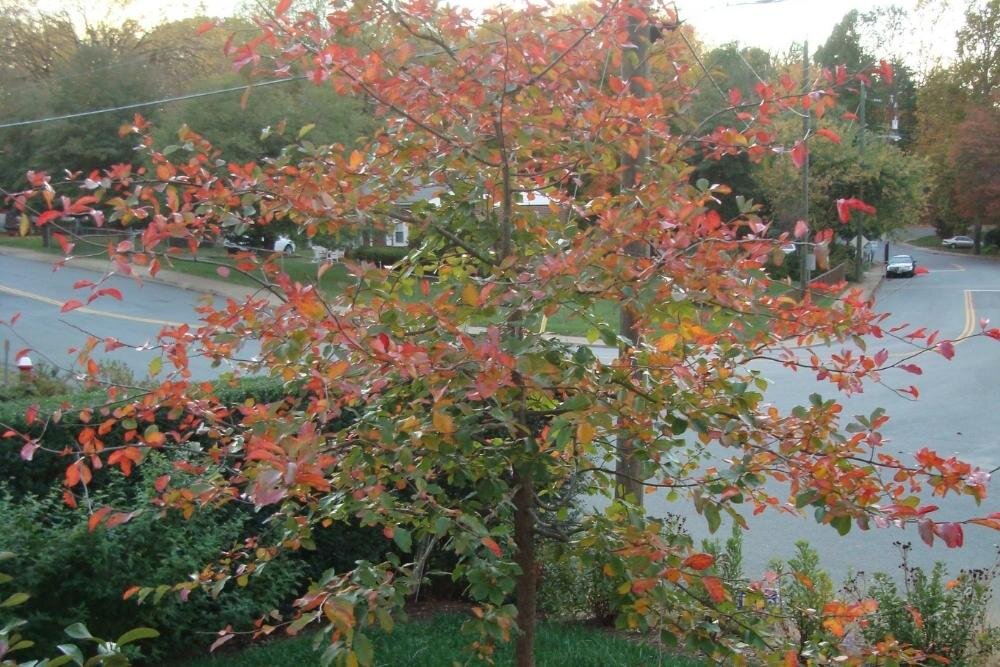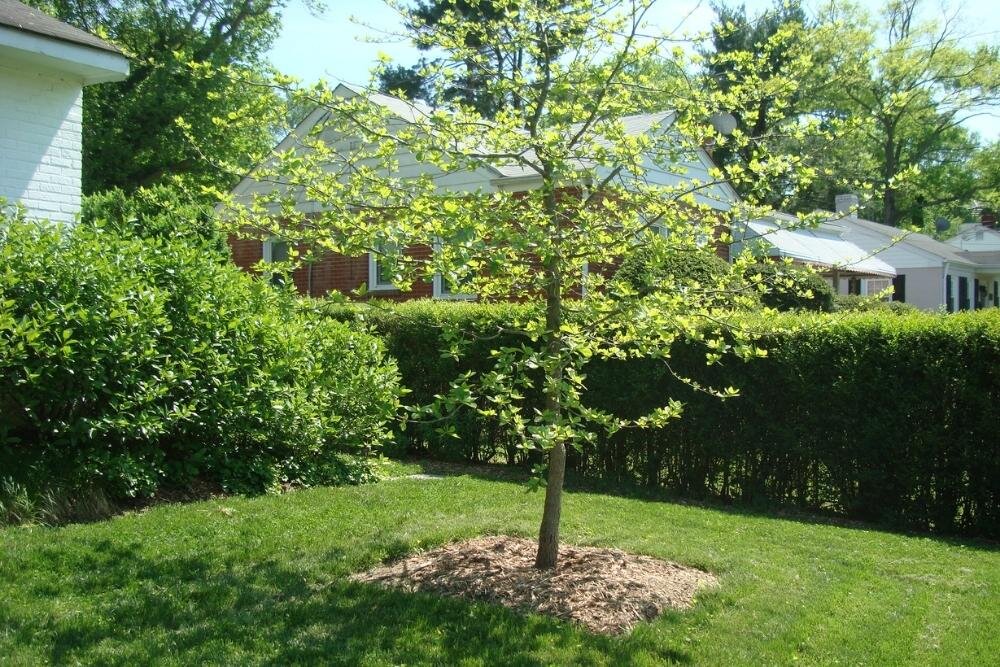Black Gum/Tupelo Gum/Pepperidge
Photo by Matt Whitaker
Scientific Description: Black Gum/Tupelo Gum/Pepperidge - Nyssa sylvatica – is a member of the Gum (Nyssaceae) family and will grow to a height of 45 to 65 feet and a drip radius of 20 to 30 feet. This tree does well in a wide variety of soil types and moisture levels but does not tolerate high pH soils. It has insignificant flowers, but the autumnal color of this tree – spectacular red – really makes a back yard or garden statement.
This species is native to the eastern United States from New England to Florida and throughout the coastal Gulf of Mexico area northward to the Great Lakes.
It prefers well-drained acidic, loamy soils and full to partial sun light conditions. It is found in Hardiness Zones between 4 and 9; thus, Chattanooga, being in zone 7, is perfect for Black Gum growth. It produces leaves that mature to 3 to 6 inches long and are a dark green in the summer and, before dropping in the winter, turn a bright dark red color.
Habitat Value: The black gum produces greenish-white flowers that are sought by many species of pollinators, especially honeybees. The small, blue-black fruit ripen in early to mid-autumn and serve as a food for many species of birds and animals, in particular squirrels.
This tree typically does not have any disease or insect problems; however, homeowners should be vigilant for leaf spot, leaf miners, and leaf scale.
Photo by Matt Whitaker
Landscape Uses: By Matt Whitaker of WMWA Landscape Architects
Nyssa sylvatica is one of our most beautiful native trees and makes an excellent specimen, street, or accent tree. It has perhaps the most striking fall color of any native or non-native tree we can plant in the southeast. I am very fond of this tree and enjoyed it as an interesting and striking presence in the landscape as a child long before I found my way to landscape architecture. Aside from its fall color, Nyssa sylvatica has an interesting branching pattern, form, and bark that make it attractive in winter.
While its tiny flowers aren’t much to look at, as polygamo-dioecious trees, they have an interesting story. What’s that mean? Well, dioecious means that plants are either male or female, normal for humans but less common for plants. Hollies are one of the most common dioecious plant groups. Every holly with berries is a female and a male somewhere nearby pollinated it so it could produce berries. A polygamo-dioecious plant is even less common. They tend to be mostly male or female but can have a few of the other flowers present. . Finally on the flowers pepperidge tree, the genus Nyssa is one of our only bee-pollinated native trees, and the flowers of Nyssa ogeche are the source of the famously delicious Tupelo honey.
One more story: when I lived in Virginia, I often drove by a giant specimen that exceeded 70 feet, growing at a 45-degree angle to the ground in someone’s front yard. I still ponder how it got that way and what kind of homeowner did not panic and cut it down. I’m thankful they didn’t.



